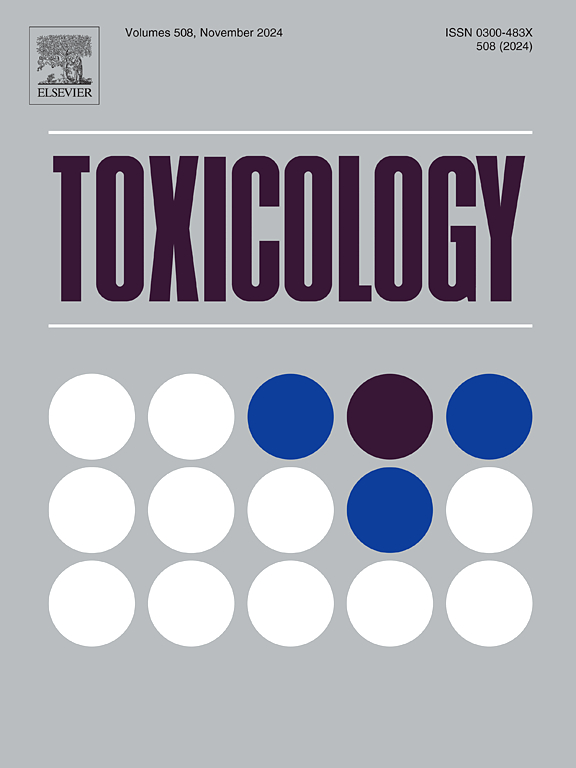揭开铅对心脏损害之谜:了解氧化应激与其他多因素机制之间错综复杂的关系。
IF 4.8
3区 医学
Q1 PHARMACOLOGY & PHARMACY
引用次数: 0
摘要
铅(Pb)暴露仍然是公共卫生领域的一个紧迫问题,越来越多的证据表明铅对心血管健康有不利影响。接触铅会产生活性氧(ROS),导致细胞和生理损伤以及氧化还原平衡紊乱。由 ROS 引发的氧化应激会破坏内皮功能、传播炎症过程并引发血管重塑,从而共同导致心血管疾病(CVDs)的恶化。本综述旨在全面阐述铅诱导的毒性影响心脏细胞的复杂机制。此外,它还简要论述了铅暴露对动脉粥样硬化、高血压和心肌梗塞这三种相互关联的心血管疾病发展的影响。此外,论文还深入探讨了铅暴露对脂质代谢、血压调节和心脏功能的具体影响,最终导致动脉粥样硬化斑块形成、血压升高和心肌梗死风险增加。通过了解这些错综复杂的机制,可以设计出有针对性的干预措施来抵消铅对心血管健康的有害影响。因此,本综述为预防和治疗策略提供了新的途径,最终有助于减轻与铅毒性相关的心血管疾病负担。本文章由计算机程序翻译,如有差异,请以英文原文为准。
Unraveling the enigma of cardiac damage caused by lead: Understanding the intricate relationship between oxidative stress and other multifactorial mechanisms
Lead (Pb) exposure remains a pressing concern in the realm of public health, with a mounting body of evidence underscoring its adverse impact on cardiovascular well-being. The exposure to Lead instigates the production of reactive oxygen species (ROS), leading to consequential cellular and physiological damage and a perturbation in redox equilibrium. The resultant oxidative stress, induced by ROS, disrupts endothelial functionality, propagates inflammatory processes, and initiates vascular remodeling, collectively contributing to the advancement of cardiovascular diseases (CVDs). The objective of this current review is to comprehensively expound upon the intricate mechanisms through which Lead induced toxicity affects cardiac cells. Additionally, it briefly addresses the ramifications of Lead exposure on the development of three interconnected cardiovascular conditions: atherosclerosis, hypertension, and myocardial infarction. Furthermore, the discourse delves into the specific repercussions of Lead exposure on lipid metabolism, blood pressure regulation, and cardiac performance, culminating in the initiation and progression of atherosclerotic plaque formation, elevated blood pressure, and an augmented risk of myocardial infarction. By understanding these intricate mechanisms, targeted interventions may be devised to counteract the deleterious effects of Lead on cardiovascular health. Thus, this review offers novel avenues for preventive and therapeutic strategies, ultimately serving to alleviate the burden of cardiovascular diseases associated with Lead toxicity.
求助全文
通过发布文献求助,成功后即可免费获取论文全文。
去求助
来源期刊

Toxicology
医学-毒理学
CiteScore
7.80
自引率
4.40%
发文量
222
审稿时长
23 days
期刊介绍:
Toxicology is an international, peer-reviewed journal that publishes only the highest quality original scientific research and critical reviews describing hypothesis-based investigations into mechanisms of toxicity associated with exposures to xenobiotic chemicals, particularly as it relates to human health. In this respect "mechanisms" is defined on both the macro (e.g. physiological, biological, kinetic, species, sex, etc.) and molecular (genomic, transcriptomic, metabolic, etc.) scale. Emphasis is placed on findings that identify novel hazards and that can be extrapolated to exposures and mechanisms that are relevant to estimating human risk. Toxicology also publishes brief communications, personal commentaries and opinion articles, as well as concise expert reviews on contemporary topics. All research and review articles published in Toxicology are subject to rigorous peer review. Authors are asked to contact the Editor-in-Chief prior to submitting review articles or commentaries for consideration for publication in Toxicology.
 求助内容:
求助内容: 应助结果提醒方式:
应助结果提醒方式:


